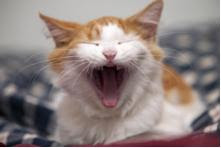
People are often tempted to compare the abilities of a black belt student from one martial arts system to those of black belt students within other systems. In addition, people often have fixed expectations of what a black belt student should be able to do, this often results in much discussion or argument over the quality of a black belt test.
For some, the new black belt student should be entirely proficient in all aspects of their chosen art or be able to prove themselves in a fight. For others the new black belt student is considered to have just learnt the basics of their art and now their real training is about to begin. This begs the question – is the black belt test an entrance or exit exam?
In case you are not familiar with the concept of entrance and exit exams let me offer you some examples: A medical degree is an entrance exam; at the end of the course the student holds a degree qualification which then gains them entrance into a programme of higher medical training. A medical degree alone does not allow a person to become a fully qualified, fully independent doctor. Likewise a Law degree provides a standalone qualification but it does not allow the holder to practice as a lawyer; it is merely an entrance qualification to higher levels of training.
On the other hand, some training programmes lead to qualifications that allow the holder to go out a work as a fully functioning practitioner in that line of work. For example, qualifications in nursing, plumbing or electrics; these are ‘exit’ qualifications and the student has to pass ‘exit’ exams that prove they are fully competent in their subject and safe to practice. That isn’t to say that there aren’t further more specialist courses that the practitioner can take, there generally are. A junior doctor who has completed a programme of higher specialist training will take exit exams that allow him/her to practice as an independent practitioner.
So, this brings me back to the question, is the black belt test an entrance or exit exam? Does it merely allow you to enter into a higher level of training in your art or does it mean that you are a fully functioning practitioner who has mastered all the techniques your art has to offer?
It depends on the art and the system that you train in doesn’t it? In most systems of karate and other traditional arts I would argue that the black belt test is an entrance exam – it shows that you have learnt the basics and you are now ready to enter into a programme of more advanced training.
However, I think that in some reality based systems the black belt test is treated more as an exit exam and that there is an expectation that black belt students can defend themselves in a very confident and expert way and will have become proficient ‘fighters’.
It may be that the bar is set higher for black belt testing in some systems than in others. I don’t think that this matters too much as long as you are not making direct comparisons. In the same way that you can’t compare degree qualifications from one university with those from another, neither can you compare black belt qualifications of one martial arts system with those from a different system either.
So, if your system of training treats the black belt test as an entrance exam at what point of training do you exit? 3rd dan? 5th dan? If you are a traditionalist then you probably believe that there is no exit exam, that training and the pursuit of perfection in your art is a life-long programme with no end-point.
Then again you may, for practical reasons, assume that there is an exit point at say 3rd dan. At third dan you may feel that the practitioner is sufficiently proficient in the full range of their art to be able to teach it as a fully qualified instructor. If you treat the black belt test as an exit exam then you may feel that the practitioner is suitably qualified to teach at 1st dan or 2nd dan.
The point though is that you understand what the black belt test in your system really represents in terms of achievement and proficiency in your art. It doesn’t really matter whether it represents a basic qualification or an advanced one as long as you understand where it fits into the entire continuum of your training system and you don’t make too many comparisons between systems without understanding where their black belt qualification fits into their system.
So, is your black belt test an entrance or an exit exam? Where would you consider the exit point to be in your system?
Sue is the Blog-Editor-In-Chief for Martial News. You can contact her at sue.wharton@martialnews.co.uk
Sue also writes a personal blog called My Journey to Black Belt

